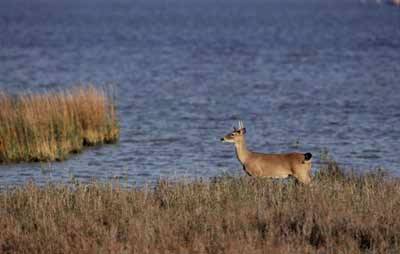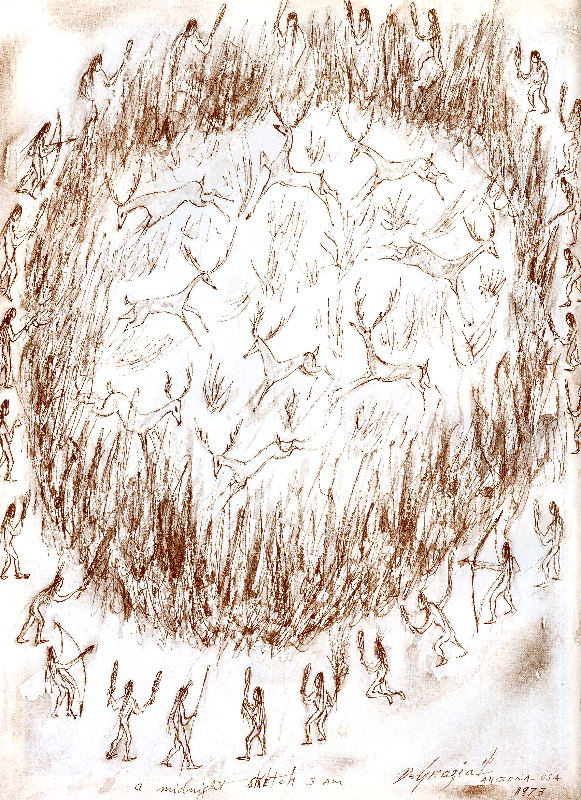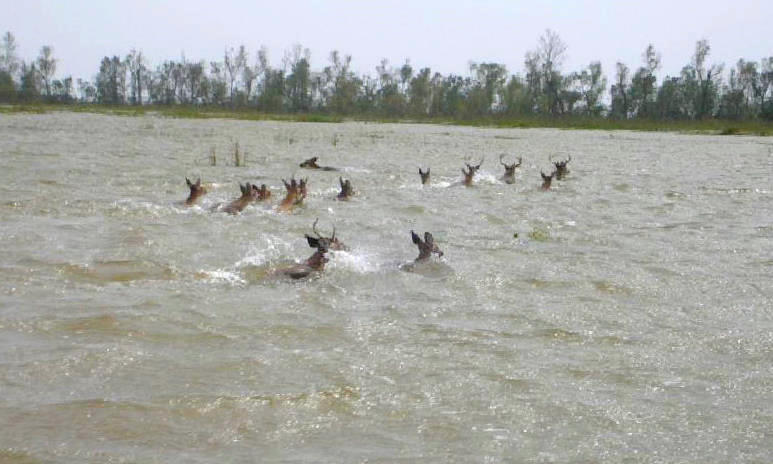Deer
White-tailed deer (Odocoileus virginianus) were another component of the large game hunted by the inhabitants of the Texas coast. Like the bison, deer also provided a complete package: meat provided an ample protein source, bones were manipulated into tools, hide was sewn into clothes and pouches, antlers were used to carefully work lithic or shell resources, and sinews were used for cording. Even dung was used as fuel and food during hard times, according to accounts by the Spaniard Cabeza de Vaca, who lived among the coastal peoples in the early 1500s.
At several sites (41GV53, 41GV66, and 41WY50) deer bones modified to make awls and needles were recovered. Additionally, grease and marrow were harvested from bones to supplement Native diets. Antlers must have had powerful symbolic, or ritual, significance, based on antler racks found as grave inclusions in south Texas cemeteries. For the peoples of the coastal prairies and marshlands, white-tailed deer were the most important terrestrial protein source.
Among indigenous peoples hunting is a very sacred act and often required the intervention of supernatural forces to ensure a successful hunt. Gatschet's ethnographies recall peyote ceremonies associated with deer hunting among the Rio Grande Comecrudos. This ceremony was accompanied by music from drums and rattles and dancing from elaborately dressed shamans. After the deer was ritually killed, hunters would go into the grasslands and marshes with a supernatural blessing.
Deer hunting strategies varied greatly across space and time. Typically, deer prefer forested areas and emerge during twilight to graze on forbs and to drink water. Collective hunting bands would chase herds into enclosed areas using torches or stalk them and strike with a calculated bow and arrow shot. Historic accounts indicate that after the Spanish arrival, coastal inhabitants hunted deer with bow and arrow from horseback. Accounts of the Mariame in south Texas indicate they consumed deer only sporadically, but occasionally killed them in mass, as many as 200 to 500 at a time. According to Cabeza de Vaca's travel writings, the Mariame would also spread abreast in a wing formation and run deer into bays where they would meet their demise. He also makes note of hunting deer in a surround. In this method, hunters encircle the deer, slowly driving them into a mass to be easily exploited.

|

|

|
